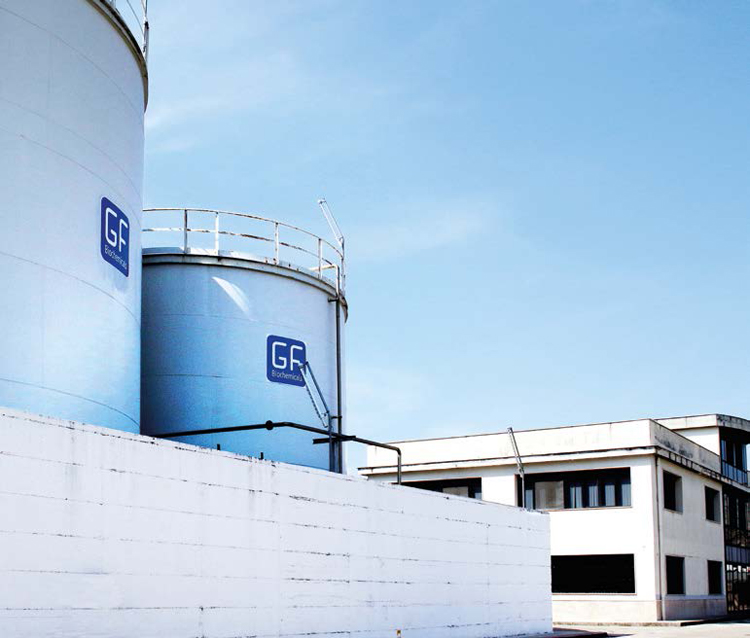Non-repayable funds that often enriched Southern politicians’ entourage and led to white elephant projects, plants with no connection with their areas and in many cases with no consideration for their negative impact on the environment and human health. This could sum up the history of Southern Italy’s forced industrialization in the years after the Second World War. But today, this part of Italy, still very far from the North in terms of employment and wealth, as bluntly shown year after year by the National Institute of Stastics (ISTAT) analyses, seems to have found in the bioeconomy a new means of economic development able to revive, in line with the local agricultural and rural environment, dismantled industrial sites. Matrica in Porto Torres, GFBiochemichals in Caserta, Mossi Ghisolfi in Modugno, Versalis in Gela are excellent examples of how it is possible to combine economy and ecology to create wealth.
Southern Italy has a new chance to restart, a last train that it must catch at all costs. Last June new positive ISTAT data came in showing that after 7 years of uninterrupted contraction, GDP has started to increase again (+1%) together with employment (+1.5%). This recovery has been driven especially by substantial growth in the agricultural sector (+7.3%) while the industrial sector per se has seen hardly any change. A shot in the arm that the green economy, strongly connected to the agricultural and forestry sector, must now spread to the industrial sector.
The model to follow is that of Matrìca in Sardinia, a joint venture between Novamont and Versalis, that in Porto Torres is building, according to Novamont itself, “the world’s biggest and most innovative green chemistry hub, a new model of economy involving industry, agriculture, environment and local economy in a great redevelopment and innovation project.” Once finished, by 2017, the project will cover an area of 27 hectares with different plants capable of processing about 350,000 tonnes a year of bioproducts (bioplastics, biolubricants, household and personal care products, phytosanitary products, additives for the rubber and plastic industry and food aromas).
“Our aim is,” states Giulia Gregori, Novamont Strategic Planning Manager, “to collaborate with local players to transform feedstock from renewable non-food sources, suitable for the area and grown on marginal land, into bioproducts: all this without affecting the food chain and depleting other resources. Matrìca strengthens local competitive capacity and innovation on several fronts: from the primary sector (agriculture, farming, just to give you some examples) to the secondary sector (agricultural vehicles and tools, logistics, bioproducts processing sector) and the tertiary sector (collaborations with local universities and research centres).”
On the other coast of the Tyrrhenian Sea, in Caserta, there is the world’s first plant producing levulinic acid from biomass. It was built by GFBiochemicals, a company founded in 2008 by two young entrepreneurs, Pasquale Granata and Mathieu Flamini (a well-known French footballer, who joyned Milan and Arsenal, and now at Crystal Palace) that is now competing with big chemical colossuses at global level producing a 100% renewable chemical intermediate with several industrial uses: from medicines to cosmetics, to paints and fuel additives. In 2015, the Caserta-based company produced 2,000 tonnes aiming at reaching 10,000 tonnes in 2017 and 50,000 tonnes by 2019. An actual revolution, if we think that the company’s top management is confident that they will able to offer in a few years biobased levulinic acid at $1 per kg compared to the current price of $4-5 per kg for oil-based levulinic acid with the same performance characteristics.
 |
|
|
 |
|
|
“The bioeconomy,” Granata claims, “has an enormous potential, it creates jobs and helps the local economy. Levulinic acid obtained from biomass can facilitate the manufacture of a broad range of more sustainable products. We can revitalize rural regions, expanding markets in which farmers can sell their products. This is the very reason why in 2008 with Mathieu Flamini we decided to start this incredible project and invest to transform GFBiochemicals into the company it has now become.”
To consolidate its leadership position in the levulinic acid market, last February, the Caserta-based company bought Segetis’ assets and intellectual property rights (over 250 patents), the main producer of levulinic acid derivatives in the USA market.
“This buyout,” Granata says, “represented a crucial moment for GFBiochemicals marking the beginning of our market growth strategy. We will carry on our development plan based on organic growth, on the creation of important partnerships, on future acquisitions of technologies for the production of levulinic acid derivatives.”
Novamont’s biotechnological research centre is also located near Caserta, in Piana Monte Verna. Another case of how green chemistry can relaunch crisis-ridden industries. As a matter of fact, the research centre of the company managed by Catia Bastioli is a branch of Tecnogen’s biotechnological research centre that was wound up for months before being bought by Novamont at the end of 2012.
“Tecnogen’s shutdown,” Catia Bastioli declared after the buyout, “would have caused the loss of an extraordinary plant and technological heritage gained over the years in Campania. Our initiative aims at proving that the bioeconomy sector based on continuous innovation can accelerate development while using a knowhow for the growth of the country that would be otherwise lost.”
From Campania to Apulia, Modugno, near Bari, is home to the Biochemtex (Mossi Ghisolfi Group) for lignine exploitation to produce paraxylol and from this, paraxylene, one of the constituents together with ethylene glycol (already available from biomass) of polyethylene terephthalate (PET used to produce ordinary plastic bottles). The objective of the research is to obtain PET entirely from resources not competing with food. While the building of the demonstrative plant of Moghi technology for the transformation of lignine, a bioproduct of biorefinery, into biochemical, in particular into aromatic compounds that can be used in the production of plastics is in a stalemate. The same industrial scale demonstrative plant (2,000 m2), should process the raw material (lignine cake) from the industrial plant in Crescentino (Vercelli).
The demonstration ENEA plant is already operational in Rotondella (Basilicata, Southern Italy). Here, Canadian Comet Biorefining is testing its technology for the production of cellulosic glucose from non-food biomass. In the field of green chemistry, ENEA’s Trisaia Research Centre represents Italy’s pride and joy, recognized at global level, especially for its use of biomass as an energy source for the production of electricity and heat in small-scale plants (agro-energy sector) and in the second-generation biofuel sector.
So Basilicata is the first Italian region to have combined green chemistry and agribusiness clusters to create a bioeconomy cluster (Biogreen), officially presented last March in Metaponto together with the first regional strategy finalized within Regione Basilicata’s S3 framework (Smart Specialization Strategy).
“Our aim is” declared Raffaele Liberali, Basilicata’s Production Activities councillor until last June, “that of being a leading player, both at national and European level, in the development strategies of this sector turning Basilicata in a pilot region in the field. The bioeconomy’s objective is that of turning waste into an important raw material. This is the concept underpinning the circular economy where nothing is wasted and everything is recycled. In Basilicata we do have a waste problem: we must stop perceiving it as something to dispose of and start seeing it as raw material to use.”
Sicily is also heading this way despite lacking a regional strategy. Here the green chemistry path runs through the reclamation, the rehabilitation and reconversion of Gela’s refinery, a committal to trial was issued last March by public prosecutor’s office in Caltanisetta against 22 managers and engineers of ENIMED and ENI “Raffineria Gela” accused of environmental disaster. All of them will also be accountable for reclamation negligence, dangerous discharge of materials and violation of environmental laws.
The way out for Gela is the Green Refinery Project included in the memorandum of understanding signed on 6th November 2014 at the Ministry of Economic Development amongst ENI, union organizations, institutions and Confindustria (the lead organization representing the manufacturing, construction, energy, transportation, ITC, tourism and services industries in Italy) intending, through the optimization of existing plants and the use of proprietary technologies, to transform raw materials (first generation such as palm oil or second generation such as animal fats and frying oils) into green diesel, green LPG and green fuel oil. Moreover, the memorandum provides for the construction of a logistic hub for shipping locally-produced crude oil and green fuels. Green Refinery, which at full capacity will employ 400 ENI’s workers, should be operational by the end of 2017. In the meantime, in February, a letter of intent was signed by ENI, ESA (Rural Development Agency) and Regione Sicilia committing themselves to prepare a feasibility study for the experimental cultivation of guayule, with the aim of starting a project for the production of natural rubber latex following the development of the agricultural supply chain. To this end, at the beginning of June, ENI communicated that they carried out the replantation of 100,000 guayule seedlings in two farms belonging to Regione Sicilia’s Rural Development Agency. The first data will be available as of the second half of 2017.
From big to small companies. Another green chemistry project was started in Sicily by two youngsters from Catania, Enrica Arena and Adriana Santanocito, who in February 2014 created a start-up called Orange Fiber with the aim of producing a sustainable fabric able to satisfy fashion’s innovation requirements using 700,000 tonnes of by-product from the citrus processing sector. The first prototype of fabric obtained from citrus fruits was presented in September 2014 thanks Trentino Sviluppo’s Seed Money funds. Then, in December 2015, thanks also to funding from Smart&Start Invitalia, the first pilot plant for the transformation of citrus pulp into cellulose for spinning was opened. The Sicilian start-up has been the recipient of several awards including the prestigious Global Change Award, an initiative devoted to the fashion industry and launched by the Swedish non-profit organization H&M Conscious Foundation.
According to the harsh data on Southern Italy’s economy submitted by the Svimez Report 2015 (Southern Italy Development Association), from 2000 to 2014, Southern Italy grew by half compared to Greece. From 2008 to 2014, investments plummeted by 38% while Central and Northern Italy decreased by 27%, an 11% difference. In the same period investments §in the industrial sector decreased by 59.3%, three times that of the already significant drop (-17.1%) in Central and Northern Italy.
Southern Italy is trying to restart from here. The bioeconomy is really its last challenge. It must be won at all costs.
Orange Fiber, www.orangefiber.it



